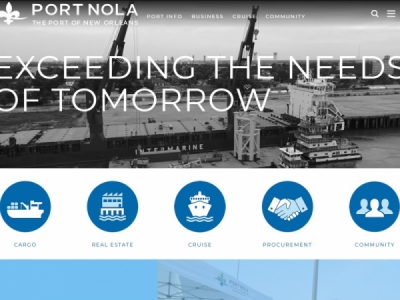
Posted on April 7, 2019
Port of New Orleans receives EPA grant for eco-locomotive; ports of LA and Long Beach issue final clean trucks assessment.
Air quality at some of the nation’s key ports is on its way to getting cleaner, thanks to efforts in New Orleans and Los Angeles, announced this week.
The Port of New Orleans and the New Orleans Public Belt Railroad (NOPB) received a National Clean Diesel Funding grant from the United States Environmental Protection Agency (EPA) to help reduce air pollution from diesel trains, the groups said. The grant will fund 40 percent of a project that will allow the NOPB to retrofit the engine of a conventional diesel train to a cleaner engine with low emissions beyond current requirements, they added. It will be the first train of its kind in the New Orleans gateway, officials said.
The eco-locomotive will meet ultra-low emitting standards, reducing ozone precursors, diesel particulate matter, fuel consumption and greenhouse gas emissions, the groups said. The retrofit is slated to begin this Spring.
“EPA’s clean diesel grants fund cleaner, more efficient transportation to help protect the environment and keep our economy growing,” EPA Regional Administrator Anne Idsal said in announcing the award. “Port NOLA and NOPB’s efforts to upgrade its locomotive fleet will contribute to improved air quality and benefit the New Orleans community.”
On the West Coast, the ports of Los Angeles and Long Beach released a final Clean Trucks Assessment, in line with efforts to reach zero-emissions goals set by the Clean Air Action Plan (CAAP). The report follows a draft assessment released in December detailing the state of technology, operational characteristics, economic considerations, infrastructure availability and commercial readiness of cleaner drayage trucks. The final document incorporates public comments on the issue.
The report is another step in the ports’ efforts to reduce greenhouse gas emissions (GHGs). The CAAP establishes zero-emissions terminal equipment by 2030 and zero-emissions trucks by 2035. As part of this strategy, the ports committed to developing feasibility assessments every three years for terminal equipment and drayage trucks to determine a path toward meeting those goals. A draft cargo-handling equipment feasibility assessment is expected to be released this spring, the groups said.
Source: dcvelocity.com





